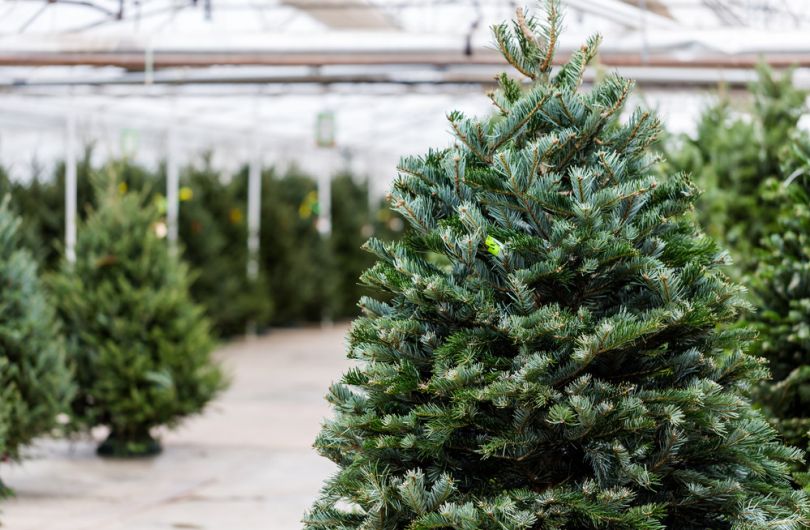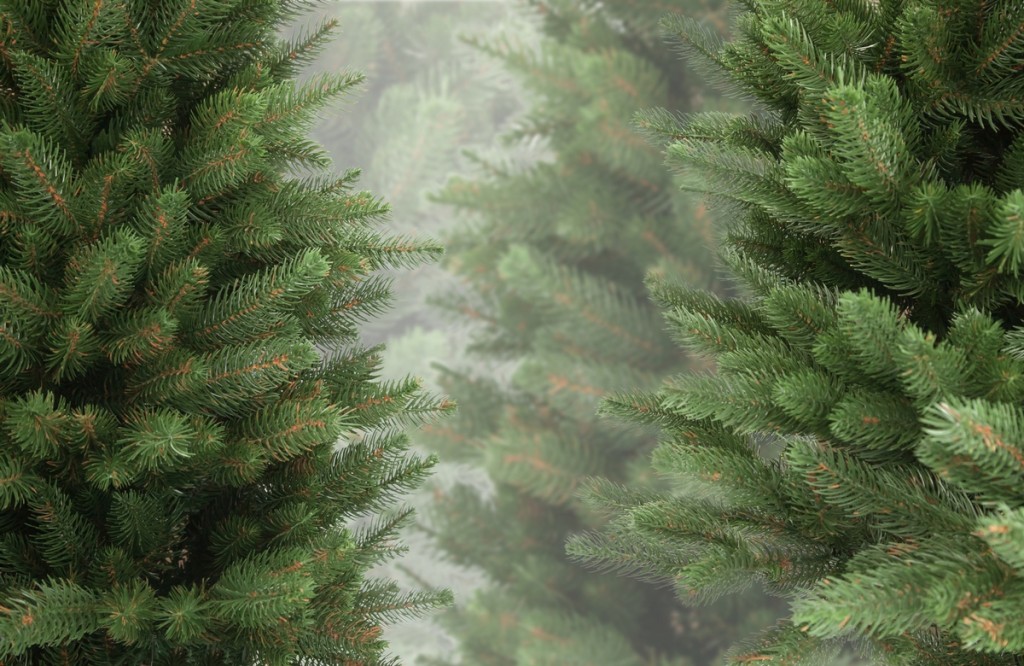December 24, 2021
Which Christmas tree is the «greenest»?

Christmas and New Year are traditionally associated with a Christmas tree. According to the survey, an elegant beauty is a mandatory attribute of the holiday for 82% of Russians. At the same time, 48% prefer an artificial Christmas tree, 27% - a natural one, 25% choose according to the situation and mood. Which option is better from the point of view of ecology? Let's figure it out.
It would seem that buying an artificial Christmas tree, we keep life natural. In addition, it does not prick, it does not shower the floor with needles, it is not necessary to think about where to take it out after the holidays. True, it does not smell like real, but here everyone decides for himself what is more important. At first glance, there are more pluses than minuses. But all these advantages are outweighed by one big drawback: the carbon footprint, 20 times the footprint of a natural Christmas tree. It turns out that in order to really benefit nature, not harm, an artificial Christmas tree should last at least 20 years! It is unlikely that collapsible trees have such a margin of safety.
In addition, according to the Greens Eco-Bureau, the composition of the material from which most artificial fir trees are made includes carcinogenic PVC, which imperceptibly evaporates into the air and poisons the inhabitants of the house and their guests.
In forest farms that grow spruce trees for sale, 1-3 new trees are planted instead of one felled tree, so no harm is done to the forest. Often in forest bazaars you can see Christmas trees that would have been cut down even without the New Year, for example, grown under power lines.
But even if we assume that the artificial Christmas tree has "lived" in the house for two decades, then the problem of recycling arises. Natural spruce, once in a landfill, will also lie there for several years, releasing methane and other greenhouse gases. According to Greenpeace, a tree two meters high, decomposing at the landfill, will emit 16 kilograms of carbon dioxide - this is equal to the production of 160 paper cups. But in the end, it will completely disintegrate into relatively safe substances for nature, because it itself has an organic origin. There are ways to speed up this process: chop the trunk and branches into mulch or burn a withered tree. In the case of artificial spruce, competent disposal is impossible, because it is a multicomponent product made of plastic of unknown composition, PVC, metal and paint. Even if it is crushed, it will not affect the situation in any way, and the discarded Christmas tree will rot for decades at the landfill, poisoning the earth and air with a cocktail of toxic chemical compounds.
In Europe, natural Christmas trees also benefit after the holidays. They are burned in special boilers that heat batteries and water in residential buildings. The spruce trees that have served their time are processed into compost for fertilizer, wooden products, paper, fuel briquettes, cat litter fillers and much more are made from them. In the USSR, chipboard was made of Christmas trees. Now there are few points for accepting Christmas trees in Russia, but they are there, and if you find time to take your Christmas tree to them after the holidays, you will help the planet become a little cleaner.
So how do you make your holiday more eco-friendly?
If you already have an artificial Christmas tree, try to make it last as long as possible.
Buy live spruce only at official Christmas markets. So you can be sure that your Christmas tree is specially grown by the method of renewable agriculture, and not cut down by poachers somewhere in the wrong place.
Give preference to trees that have grown in your region: their carbon footprint is lower, as there are less fuel costs for transportation.
After the holidays, do not leave your spruce near the garbage cans, but take it to the reception point or, if possible, try to recycle it yourself, for example, burn it in the country or chop it and put it in compost.
Find a more eco-friendly alternative to a felled Christmas tree: dress up a live spruce in the yard near the house, make a Christmas tree from recycled materials, buy a live tree in a pot, and then plant it in the ground. There are special services that provide live Christmas trees for rent. Specialists bring the spruce in a tub to your home, and after the Old New Year they take it back to the nursery and plant it in the ground again. Such a service is more expensive than buying a felled tree, but it is a contribution to the health of the planet, which means ours and our descendants.
It would seem that buying an artificial Christmas tree, we keep life natural. In addition, it does not prick, it does not shower the floor with needles, it is not necessary to think about where to take it out after the holidays. True, it does not smell like real, but here everyone decides for himself what is more important. At first glance, there are more pluses than minuses. But all these advantages are outweighed by one big drawback: the carbon footprint, 20 times the footprint of a natural Christmas tree. It turns out that in order to really benefit nature, not harm, an artificial Christmas tree should last at least 20 years! It is unlikely that collapsible trees have such a margin of safety.
In addition, according to the Greens Eco-Bureau, the composition of the material from which most artificial fir trees are made includes carcinogenic PVC, which imperceptibly evaporates into the air and poisons the inhabitants of the house and their guests.
In forest farms that grow spruce trees for sale, 1-3 new trees are planted instead of one felled tree, so no harm is done to the forest. Often in forest bazaars you can see Christmas trees that would have been cut down even without the New Year, for example, grown under power lines.
But even if we assume that the artificial Christmas tree has "lived" in the house for two decades, then the problem of recycling arises. Natural spruce, once in a landfill, will also lie there for several years, releasing methane and other greenhouse gases. According to Greenpeace, a tree two meters high, decomposing at the landfill, will emit 16 kilograms of carbon dioxide - this is equal to the production of 160 paper cups. But in the end, it will completely disintegrate into relatively safe substances for nature, because it itself has an organic origin. There are ways to speed up this process: chop the trunk and branches into mulch or burn a withered tree. In the case of artificial spruce, competent disposal is impossible, because it is a multicomponent product made of plastic of unknown composition, PVC, metal and paint. Even if it is crushed, it will not affect the situation in any way, and the discarded Christmas tree will rot for decades at the landfill, poisoning the earth and air with a cocktail of toxic chemical compounds.
In Europe, natural Christmas trees also benefit after the holidays. They are burned in special boilers that heat batteries and water in residential buildings. The spruce trees that have served their time are processed into compost for fertilizer, wooden products, paper, fuel briquettes, cat litter fillers and much more are made from them. In the USSR, chipboard was made of Christmas trees. Now there are few points for accepting Christmas trees in Russia, but they are there, and if you find time to take your Christmas tree to them after the holidays, you will help the planet become a little cleaner.
So how do you make your holiday more eco-friendly?
If you already have an artificial Christmas tree, try to make it last as long as possible.
Buy live spruce only at official Christmas markets. So you can be sure that your Christmas tree is specially grown by the method of renewable agriculture, and not cut down by poachers somewhere in the wrong place.
Give preference to trees that have grown in your region: their carbon footprint is lower, as there are less fuel costs for transportation.
After the holidays, do not leave your spruce near the garbage cans, but take it to the reception point or, if possible, try to recycle it yourself, for example, burn it in the country or chop it and put it in compost.
Find a more eco-friendly alternative to a felled Christmas tree: dress up a live spruce in the yard near the house, make a Christmas tree from recycled materials, buy a live tree in a pot, and then plant it in the ground. There are special services that provide live Christmas trees for rent. Specialists bring the spruce in a tub to your home, and after the Old New Year they take it back to the nursery and plant it in the ground again. Such a service is more expensive than buying a felled tree, but it is a contribution to the health of the planet, which means ours and our descendants.

Read more
July 31, 2024
April 12, 2024
April 5, 2024